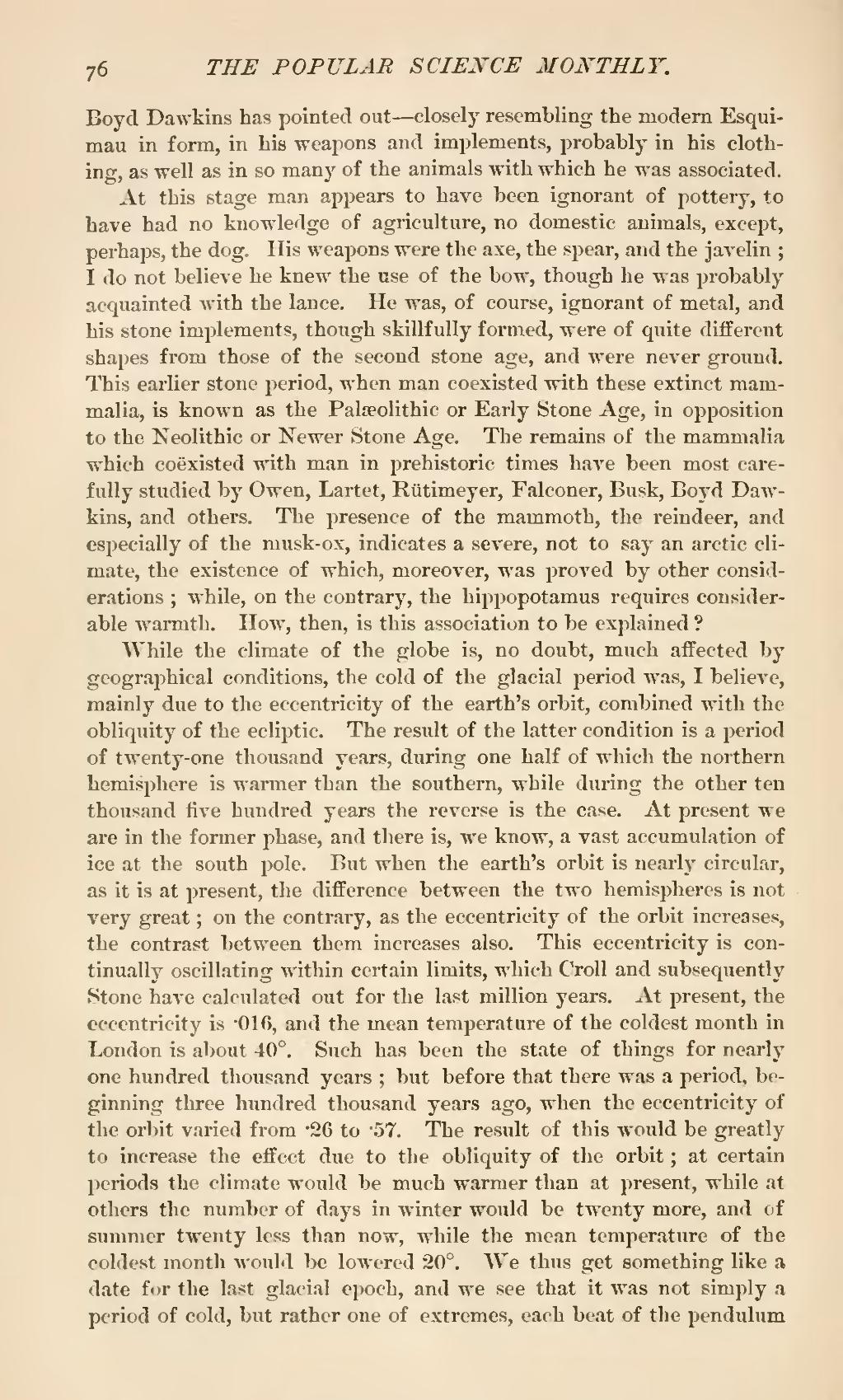Boyd Dawkins has pointed out—closely resembling the modern Esquimau in form, in his weapons and implements, probably in his clothing, as well as in so many of the animals with which he was associated.
At this stage man appears to have been ignorant of pottery, to have had no knowledge of agriculture, no domestic animals, except, perhaps, the dog. His weapons were the axe, the spear, and the javelin; I do not believe he knew the use of the bow, though he was probably acquainted with the lance. He was, of course, ignorant of metal, and his stone implements, though skillfully formed, were of quite different shapes from those of the second stone age, and were never ground. This earlier stone period, when man coexisted with these extinct mammalia, is known as the Palæolithic or Early Stone Age, in opposition to the Neolithic or Newer Stone Age. The remains of the mammalia which coëxisted with man in prehistoric times have been most carefully studied by Owen, Lartet, Rütimeyer, Falconer, Busk, Boyd Dawkins, and others. The presence of the mammoth, the reindeer, and especially of the musk-ox, indicates a severe, not to say an arctic climate, the existence of which, moreover, was proved by other considerations; while, on the contrary, the hippopotamus requires considerable warmth. How, then, is this association to be explained?
While the climate of the globe is, no doubt, much affected by geographical conditions, the cold of the glacial period was, I believe, mainly due to the eccentricity of the earth's orbit, combined with the obliquity of the ecliptic. The result of the latter condition is a period of twenty-one thousand years, during one half of which the northern hemisphere is warmer than the southern, while during the other ten thousand five hundred years the reverse is the case. At present we are in the former phase, and there is, we know, a vast accumulation of ice at the south pole. But when the earth's orbit is nearly circular, as it is at present, the difference between the two hemispheres is not very great; on the contrary, as the eccentricity of the orbit increases, the contrast between them increases also. This eccentricity is continually oscillating within certain limits, which Croll and subsequently Stone have calculated out for the last million years. At present, the eccentricity is ·016, and the mean temperature of the coldest month in London is about 40°. Such has been the state of things for nearly one hundred thousand years; but before that there was a period, beginning three hundred thousand years ago, when the eccentricity of the orbit varied from ·26 to ·57. The result of this would be greatly to increase the effect due to the obliquity of the orbit; at certain periods the climate would be much warmer than at present, while at others the number of days in winter would be twenty more, and of summer twenty less than now, while the mean temperature of the coldest month would be lowered 20°. We thus get something like a date for the last glacial epoch, and we see that it was not simply a period of cold, but rather one of extremes, each beat of the pendulum
